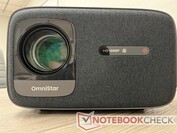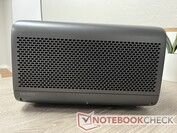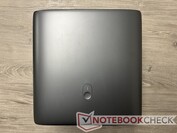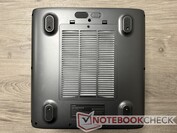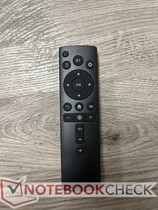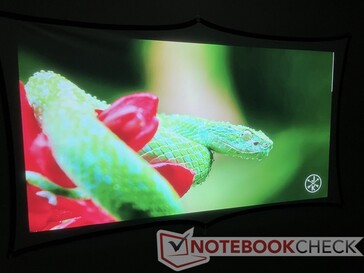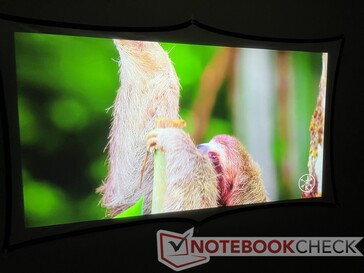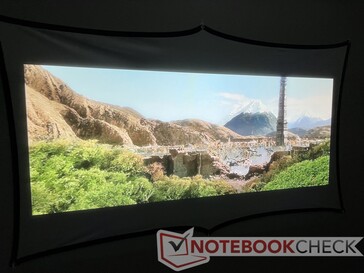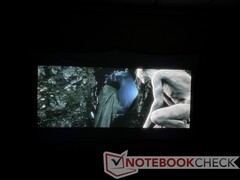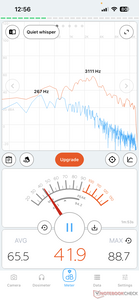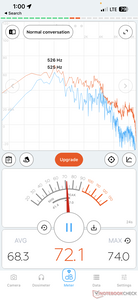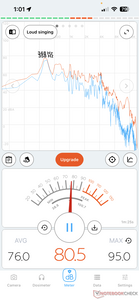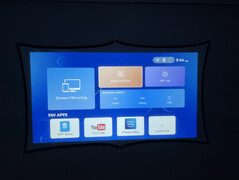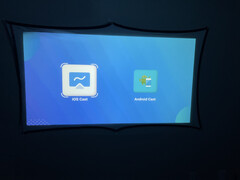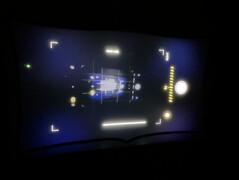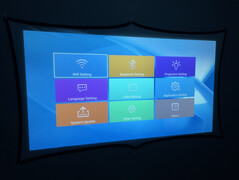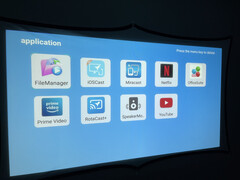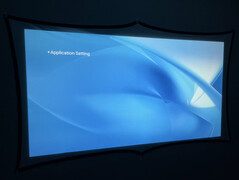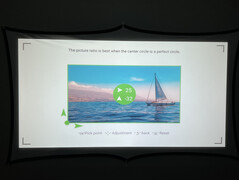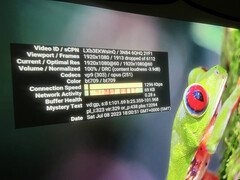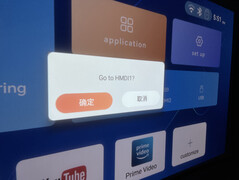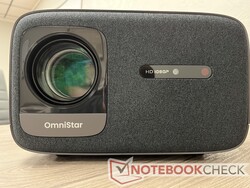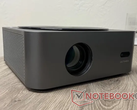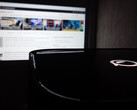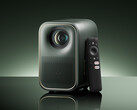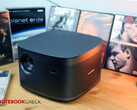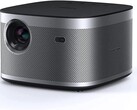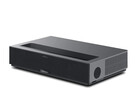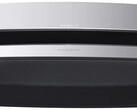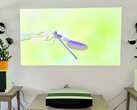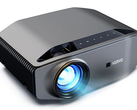Casiris Tech Omnistar L80 hands-on review: 1080p projector stumbles across the finish line
Casiris has been in the projector game for a little over a decade, and the company's catalogue covers the gamut of projector styles. From compact projectors for travel to large 4K ultra-short throw devices designed for home theaters, Casiris covers most use cases. The latest projector from the Chinese firm is the OmniStar L80, a standard long-throw projector that Casiris claims is the "world's brightest LCD projector." Let's take a look at the good and bad of the newest OmniStar device.
| Specifications | |
|---|---|
| Projector type | LCD long-throw (LED backlight) |
| Maximum resolution | Projected image: Full HD (1920x1080) |
| Image size | 40-200 inches |
| Throw Ratio | 1.31:1 |
| Operating system | Android TV 9.0 |
| CPU | 4x Cortex-A53 |
| GPU | ARM Mali-G31 MP2 |
| RAM | 1 GB |
| Storage | 8 GB |
| Connections | 2x HDMI 2.0m 2x USB 2.0, 1x USB-C 2.0, 3.5mm audio, Ethernet, DC IN |
| WLAN | 802.11 (2.4 and 5 GHz) |
| Bluetooth | 5.0, BLE |
| Built-in speakers | 2x 15 Watt Stereo |
| Brightness | 1,500 ANSI lumens |
| Lamp life | 30,000 hours (3.42 years continuous usage) |
| Power consumption | max. 220 watts |
| Dimensions and weight | 28.71 x 28.96 x 18.03 cm (11.3 x 11.4 x 7.1 in), 5.08 kg (11.2 lbs) |
| Other features | Auto-focus, Auto-keystone |
Design and Case - Bulky, solid plastic
The OmniStar L80 is big. This is first thing I noticed when taking it out of the box. While this isn't unexpected for an 1080p projector, it's a fair bit bulkier than competitors like the Xgimi Horizon. The projector takes up a considerable amount of space (roughly 831.4 cm2 or 128.8 in2). Additionally, the included 239.75 Watt power supply is also large and heavy. The PSU's cabling is very short at only 2 meters (~6.6 feet). This is definitely a "set and forget" projector that isn't meant to be moved around too much.
The build quality is good. The projector is wrapped in a dark gray matte plastic shell with ventilation perforations on each side and the bottom. The front and back of the device are covered with a nice fabric that is well-made and seems like it will hold up over time without fraying. The power button sits on top has a reassuring click. All ports are located along the top of the backside. Overall, the design is simple with a touch of flair, but the projector is fairly large. The OmniStar L80 will fit in well at home or the office.
The OmniStar L80 is rated at IP5X dust resistance.
There is a small built-in stand under the front of the device that pops out via a slide latch. Unfortunately, my review unit's stand was unusable; as soon as I set the projector on a surface with the stand deployed, the weight of the device proved to be too much and the stand would collapse back into the projector. As such, I could not elevate the picture at all. The stand is designed to raise the angle of the projected image by up to 15°, but mine flat out didn't work.
Additionally, there is no easy way to mount the OmniStar L80 to an independent projector stand or tripod. While some projectors, like those from Xgimi, have a standardized threaded hole that fits most tripods, the OmniStar L80 does not. Instead, there are four threaded holes embedded deep in the rubber feet on the bottom of the projector. Theoretically, the L80 could be mounted on a plate that could then be suspended from the ceiling or mounted to a stand, but I was unable to confirm this.
Connections along the back are robust, including two HDMI 2.0 ports, two USB-A 2.0 ports, a single USB-C 2.0 port, a 3.5mm audio jack, an Ethernet jack, and the DC input. The projectors also supports Bluetooth 5.0 (more on this below) and can connect via WiFi to both Android and Apple devices (via Mirror Cast).
Picture Quality - Bright but muddy
The OmniStar L80 claims to be the "brightest LCD projector." It is rated at 1,500 ANSI lumens, which is noticeably brighter than other Full-HD projectors in this price bracket (which normally come in at 800-1,000 ANSI lumens). The picture is indeed very bright and can be seen with lights on. However, there are some small drawbacks.
At its full brightness, the projector produces a vibrant image that washes out, particularly in bright colors such as green, white, and yellow. Detail can be lost in these colors. The overall picture is decent, but pixels are visible, even from a normal viewing distance of 2.5 m (8.2 ft). This muddies the overall picture a bit as individual pixels struggle to blend with each other and colors can smear across pixel groups. This is most noticeable in hair and vegetation where subtle details of texture define boundaries. The L80 blurs these boundaries a bit, creating a muddier picture than the Xgimi Elfin, for example. Still, movies look good on the projector, though the edges of text come across as smeared.
The OmniStar L80 uses a 5.7-inch LCD module. This module supports up to Full HD (1080p) resolution and 16.8 million colors. The projector can process 4K input, but it will spit out a downscaled 1080p image. I wouldn't feed it 4K video as it struggles with higher resolution content (more on this below), but it technically can handle 4K movies. The projector can produce up to a 200-inch (5.1 m) image, though I'd recommend you keep the image below 80 inches as it tends to fall apart past that size.
The OminStar L80 does not support HDR content and lacks any kind of motion-smoothing features (like MEMC). That's not unexpected at this price, but for a bit more cash, you can find a projector that does have these features, and I'd say they're worth the extra money.
The L80 has adequate auto-focus and auto-keystone features. Focusing takes roughly about 10-15 seconds and is accurate; not once did I feel the need to manually adjust the auto-focus. Auto-keystone is likewise excellent; upon booting up, the projector will correct the image and usually does a great job. Manually adjusting the keystone is easy thanks to the descriptive elements on the correction screen. Other projector companies would do well to include adjustment values for each corner so users can better adjust the image.
Overall, the OmniStar L80 produces a decent image. It's not great, but it's good enough for casual movie viewing and acceptable for office presentations. Contrast is lacking, and the aforementioned issue with pixel smearing result in a muddier image than I'd like, but it's adequate for the price. It sure gets bright, though.

Sound Quality - Too loud to be clear
Casiris plays up the OmniStar L80's sound quality, touting its dual 15 Watt speakers. The projector gets very loud, averaging 81 dB from 1 meter (3.3 feet) away and peaking at 100 dB. This is more than loud enough to fill a large theater room or office, but the biggest flaw with the speakers is their clarity (or rather, the lack thereof).
At 50%, the speakers average roughly 72 dB, but this is where the problems begin. The case starts to rattle at this volume level, and it is noticeable at louder points. At full volume, the case consistently shakes and vibrates, even when resting on a towel or other dampening material. It is highly distracting and somewhat concerning; I feel like the speakers are one bass drop away from blowing out.
Interestingly, this only occurs with media played directly from the device's onboard storage or streamed through an app (e.g., YouTube, Prime Video). When playing media via an HDMI source or USB drive, the sound level is significantly quieter, peaking at just under 70 dB.
Casiris also highlights the Bluetooth capabilities of the OmniStar L80. The device is advertised as a Bluetooth speaker in addition to a standard projector. Sadly, I couldn't test this feature out; no matter what I tried to connect to the L80's Bluetooth, I could not get anything to play wirelessly. I successfully paired and connected an iPhone 13, an Android phone (Doogee S99 running Android 12), a laptop running both Windows 10 and Arch Linux, and a Chromebook. All of these devices paired to the L80 and showed that the device was connected as a speaker, but media would simply not play through the L80. Casiris did tell me this was a prototype unit and that the final retail model may have some changes, so hopefully this is one of them.
Overall, the sound from the OmniStar L80 is disappointing. Yes, it gets very loud, but crackles and distortion (on top of case rattle) cripple the audio experience. I'd recommend keeping the volume at 50% or lower.
On another note, the internal fan is very loud. It hovers between 45-50 dB and is noticeable from roughly 1 m away, even while media is playing. It also runs constantly, never slowing down. This may be due to my review unit being a prototype, but this is something to watch for.
Software and Features - Limited selection and beleaguered streaming
The OmniStar L80 runs a modified version of Android 9, which is extremely outdated at this point. Casiris's modifications don't do the aged operating system any favors; apps are limited to a pre-installed selection, and the Google Play Store is not supported as far as I can tell. Settings are also fairly rudimentary, focused mainly on simple things like brightness levels, boot-up behavior, and which apps appear on the homescreen.
In its favor, the L80's UI is fluid and straightforward to use. However, this is because it is barebones. Still, a simple and straightforward system is preferable to a complex and clunky one. The L80 is a good "plug-and-play" projector; anyone should be able to connect a device and project an image without too much fuss.
The OmniStar L80 supports streaming media via YouTube, Netflix, and Prime Video. It can also mirror a smartphone or tablet screen (either iOS or Android). Streaming, in a nutshell, is not great. Streaming the popular Costa Rica 4K video reveals that roughly 20-30% of frames are dropped, even when the projector is only streaming at 1080p60. The video stutters along like a three-legged tortoise, and the experience is awful. Prime Video would regularly drop the video stream (if it could load a video at all), and Netflix wasn't much better. Simply put, an external streaming stick or laptop is all but required for a smooth streaming experience. Playback from a USB drive is smooth and trouble-free.
Pros
+ bright 1500 ANSI lumen lamp
+ simple and easy-to-use UI
+ solidly built
Cons
- speakers rattle at 50% volume and up
- pixel bleeding and halo effects
- streaming stutters too much to be watchable (some videos don't even load)
- limited app selection
Conclusion
The Casiris OmniStar L80 is a simple, traditional projector that tries to be a smart device and ultimately stumbles its way through to mediocrity. It works fine as an office projector for presentations or a home projector for a dedicated streaming stick or device. Its image is bright, but it isn't quite as crisp as other projects in the US$500 price range. Its speakers get very loud, but audio distorts past 50% and the case rattles noisily.
On the plus side, its color reproduction is fairly good; colors pop (though bright colors tend to blow out) and contrast is acceptable. Additionally, it's a simple projector to use, which may make it appealing for a meeting room or for public use.
There are major negatives. For one, the streaming features are, frankly, pathetic. The projector cannot stream FHD content smoothly and regularly drops frames. About half the time, the streaming content crashes or fails to load at all. The speakers are poorly tuned and sound like they may blow themselves out. The projector itself is chunky for what it offers and may be difficult to slot into a theater setup.
The biggest draw to the OmniStar L80 is its price. The projector has an MSRP of US$499, although it is currently up for pre-order on Kickstarter for $239. At that price, the L80 is a steal. It's hard to find a decent projector under $250, let alone one that projects a 1080p image this bright with usable speakers and the input support the L80 has.
At its MSRP of $499, the market becomes much more competitive. An alternative to the OmniStar L80 is Xgimi's Elfin, which is a very compact and light FHD projector. The Elfin only gets up to 800 ANSI lumens (roughly half that of the L80's 1,500), but the image is clear and vibrant without the color bleed issues of the L80. The Elfin's speakers are smaller (two 3 Watt stereo speakers), but considering the L80's speakers distort so badly, the Elfin's can produce a clearer sound that gets about as loud as 50% volume on the L80. The Elfin is also a competent smart projector, and using it is smooth.
Other companies, such as BenQ and Anker, offer great projectors at this price range as well that don't have has many stumbling blocks as the OmniStar L80. While the Casiris OmniStar L80 shows a lot of promise on paper, it is ultimately disappointing. I'd recommend passing on this one unless you can get it on sale.
Pricing and Availability
The Casiris OmniStar L80 is currently available on Kickstarter.
Transparency
The present review sample was made available to the author as a loan by the manufacturer or a shop for the purposes of review. The lender had no influence on this review, nor did the manufacturer receive a copy of this review before publication. There was no obligation to publish this review.


 Deutsch
Deutsch English
English Español
Español Français
Français Italiano
Italiano Nederlands
Nederlands Polski
Polski Português
Português Русский
Русский Türkçe
Türkçe Svenska
Svenska Chinese
Chinese Magyar
Magyar
